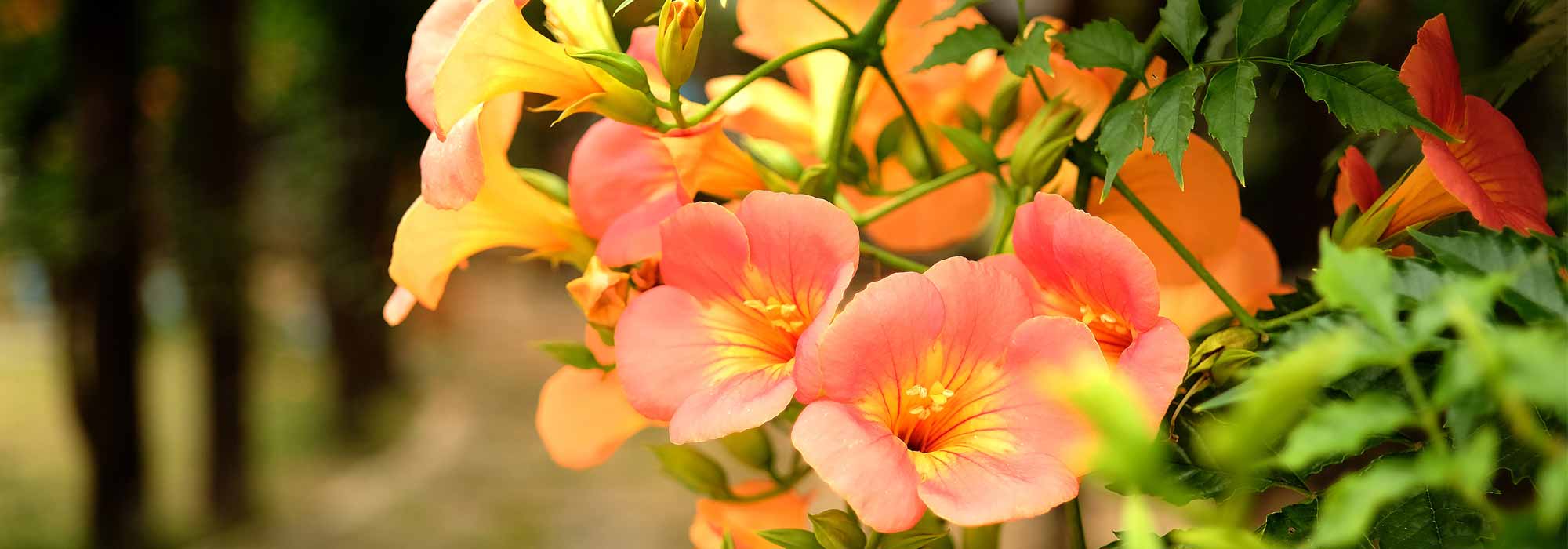
Choosing a trumpet vine
Our tips for making the right choice
Contents
The term bignonia, or Campsis, refers to vigorous climbing plants from the family Bignoniaceae. Nicknamed the “Trumpet of Jericho,” the numerous varieties of bignonias are particularly valued for their spectacular flowering, which produces flowers in various colours and sizes.
Hardiness, height and spread, flowering, training… many selection criteria will lead you to choose one variety of bignonia over another.
Here are all our tips for choosing a bignonia that will not only suit your preferences but also your environment: its climate, available space, and so on.
According to hardiness
Trumpet vines have quite good cold resistance, tolerating an average of -10°C under good growing conditions. Thus, you can grow trumpet vine in most regions with mild winters, provided it is planted in full sun (except in the south-east where it is grown in shaded conditions), in dry soil, and sheltered from the wind. Note that the hardiness of trumpet vines can vary significantly from one species to another.
For instance, Bignonia capreolata is not the most cold-resistant species, as its hardiness is limited to about -5°C. It is therefore reserved for regions with the mildest winters, in oceanic (it withstands sea spray well) and Mediterranean areas. The Campsis grandiflora and Campsis radicans are capable of withstanding frosts close to -15°C, always under favourable growing conditions, and provided these temperatures do not last for an extended period.
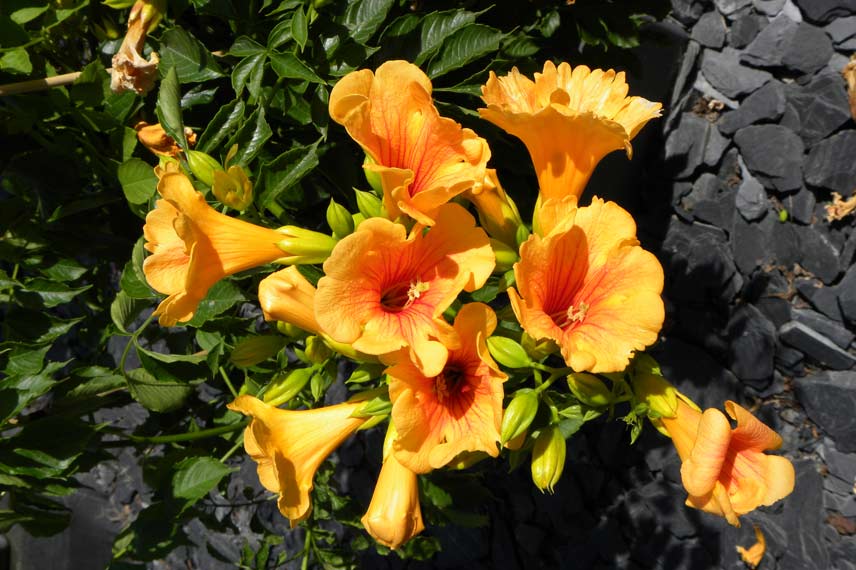
Campsis grandiflora Summer Jazz Gold
Finally, among the hardiest, the Summer Jazz® trumpet vines and Campsis x tagliabuana Tracamp are the main ones mentioned, as they can withstand temperatures between -15°C and -20°C (for short periods).
Read also
Bignonia: planting, pruning, propagatingBased on height
If you don’t have a garden but do have a balcony or terrace, you can grow your trumpet vine in a large pot. Prefer to choose compact varieties of trumpet vine. In particular, consider Campsis radicans ‘Indian Summer’ and hybrid trumpet vines, such as Campsis x tagliabuana ‘Summer Jazz Fire’, which are more easily grown in pots and are also well suited to small spaces (consider them for a small garden, therefore).
On the other hand, if you have a large garden, feel free to plant larger-growing varieties, such as Campsis capreolata ‘Tangerine Beauty’, which reaches a height of 8 m with a spread of 4 m, or even Campsis tagliabuana ‘Madame Galen’, which achieves a remarkable height and spread of 10 m at ripeness.
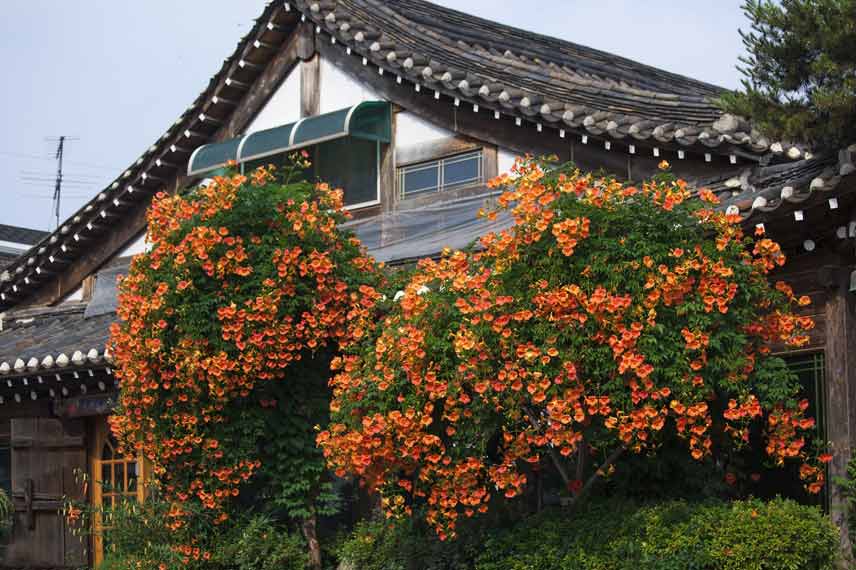
Note: Bignonia capreolata can reach up to 20 m in the wild, but it never exceeds 8 m in a garden.
You can of course also choose intermediate-sized varieties, including ‘Yellow Trumpet’ with its 6 m height and 4 m spread, or Campsis radicans ‘Stromboli’, which reaches a height of 4 m with a spread of 3 m at ripeness.
Discover other Campsis - Trumpet Creeper
View all →Available in 0 sizes
Available in 0 sizes
Available in 3 sizes
Available in 1 sizes
Available in 2 sizes
Available in 1 sizes
Available in 3 sizes
Available in 1 sizes
Available in 1 sizes
Available in 2 sizes
Choosing a trumpet vine for its flowers
Trumpet vine is a climbing plant highly valued for its trumpet-shaped flowers, which come in orange, yellow, or red, and have an exotic charm. Among the many varieties, some offer truly exceptional flowering.
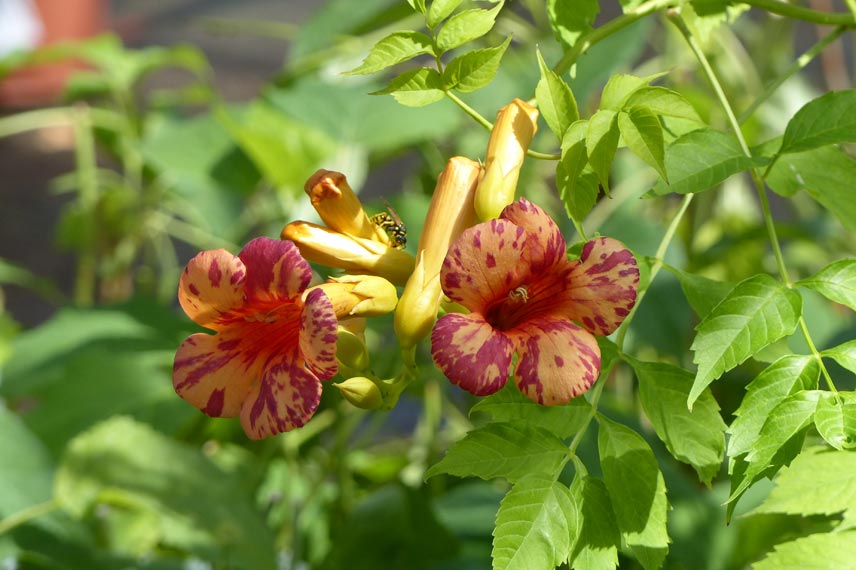
Trumpet vine Campsis Orangeade
First of all, know that the trumpet vine with the largest flowers is none other than Campsis grandiflora. Its spectacular flowering features vermilion flowers measuring 10 cm in diameter, which, however, offer no fragrance.
The trumpet-shaped flowers of Bignonia capreolata are certainly less spectacular than those of ‘grandiflora’, but diffuse an amazing fragrance that blends notes of chocolate and roasted coffee. Depending on the cultivar, the flowers can be reddish-orange to copper, or purple (‘Atrosanguinea’), or mandarin with a yellow throat (Tangerine Beauty).
Other varieties worth mentioning include the flowering of the trumpet vine ‘Indian Summer’, which offers trumpets measuring 8 cm in diameter with a remarkable salmon-orange hue, while the ‘Stromboli’ features a stunning bright red colour and flowers measuring 5 cm in diameter.
New varieties of trumpet vines feature astonishing bicoloured flowers. This is particularly true of the Orangeade trumpet vine, whose lovely reddish-orange trumpets are marbled with pale orange.
Read also
Pruning bignoniaChoosing a trumpet vine for its foliage
Although the abundant flowering of the trumpet vine largely overshadows its foliage, the leaves contribute to the plant’s lushness. Deciduous or evergreen, the leaves enhance the colours and shapes of each flower. Some varieties of Campsis have particularly remarkable foliage.
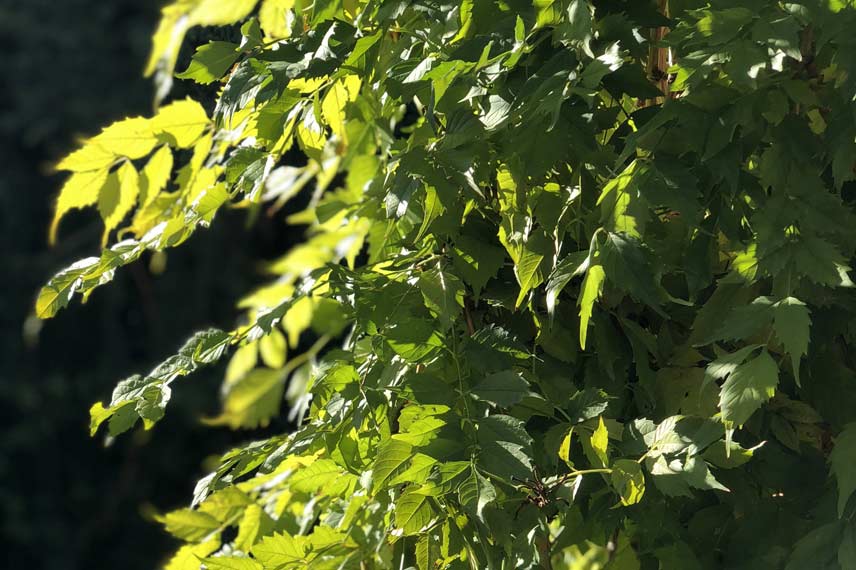
This is particularly true for ‘Tangerine Beauty’, which offers a dark green, leathery and evergreen foliage in mild climates, and which takes on lovely violet hues in winter.
As for Campsis radicans, its beautiful deciduous foliage, dark green and matte, turns golden yellow in autumn before falling.
According to its staking needs
Like ivy, the bignonia is a climbing plant that attaches itself to a support. Depending on the species, campsis is thus capable of clinging more or less easily to its tutor, thanks to its vigorous woody climbing stems and ramified tendrils. The bignonia is therefore widely used to adorn walls, pergolas, and fences.
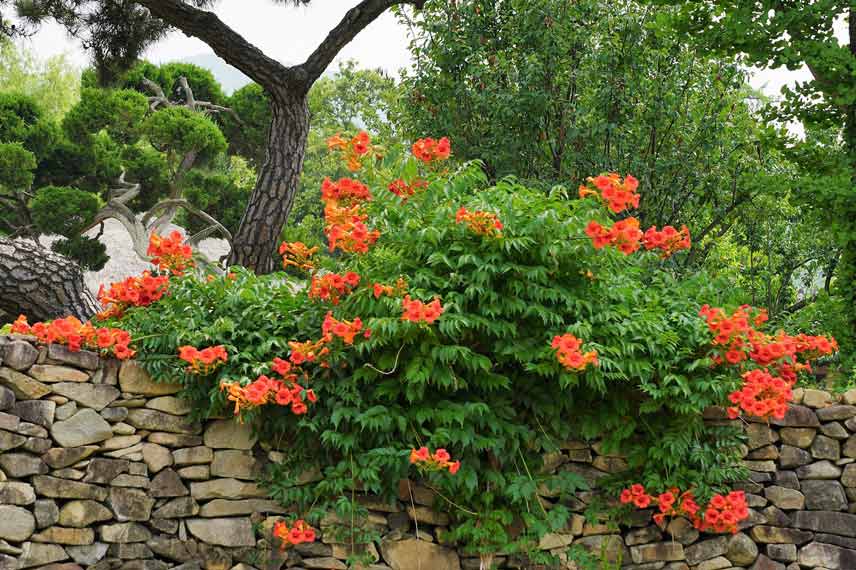
It should be noted, however, that only cultivars derived from Campsis radicans are capable of clinging very easily to any support, and this without any assistance from the gardener.
Most other bignonias, on the other hand, need to be trained as they grow when they are still in the stage of young stems.
- Subscribe!
- Contents
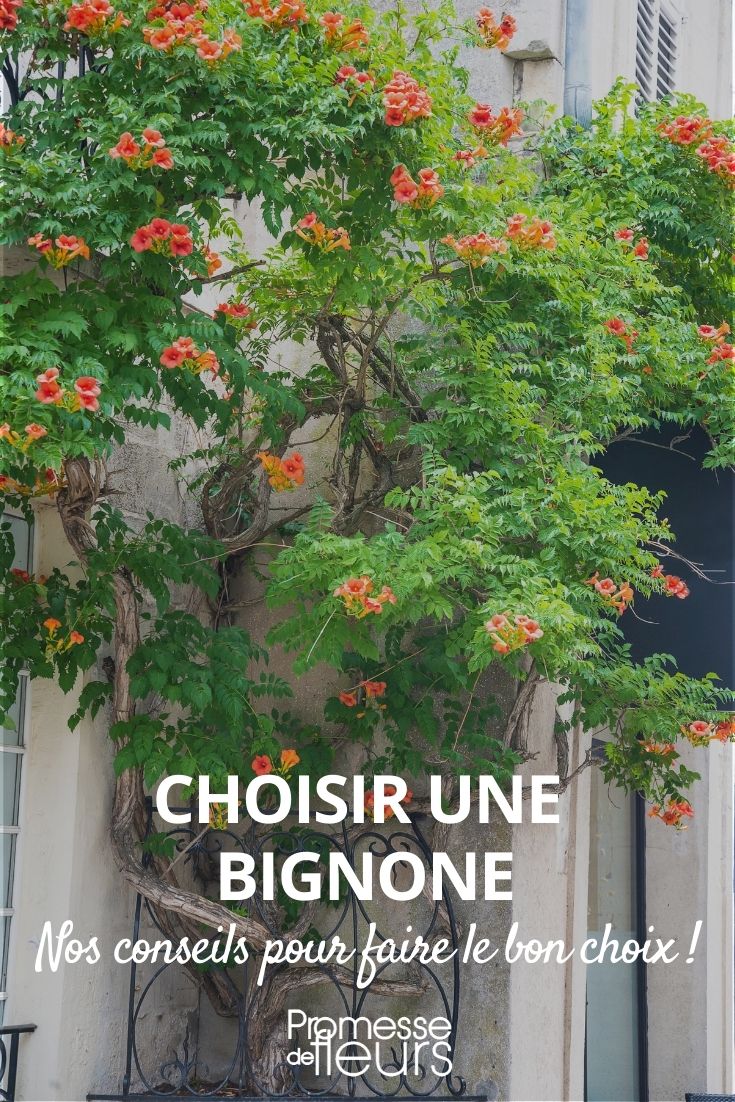































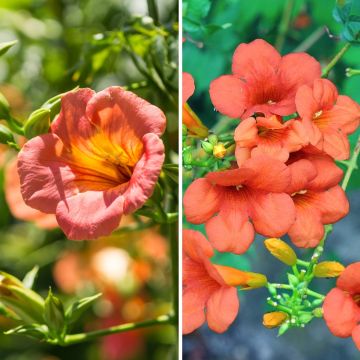

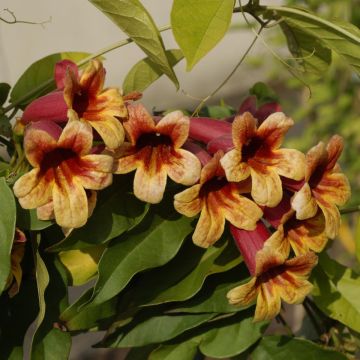
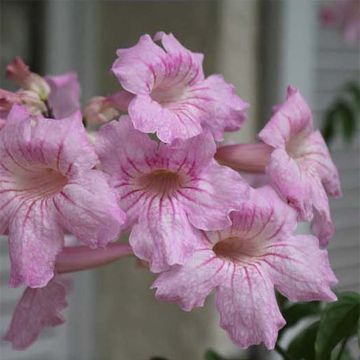
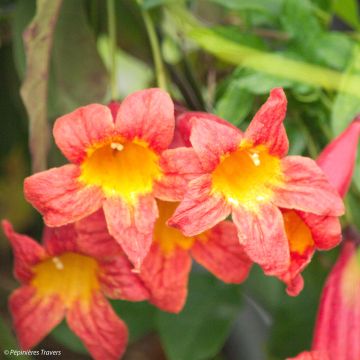
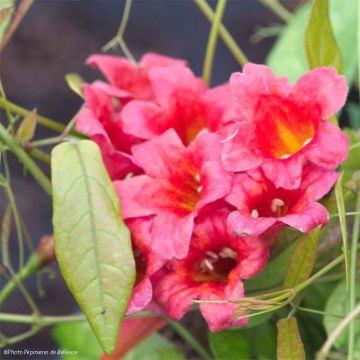


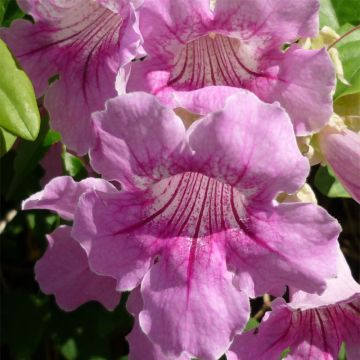

Comments